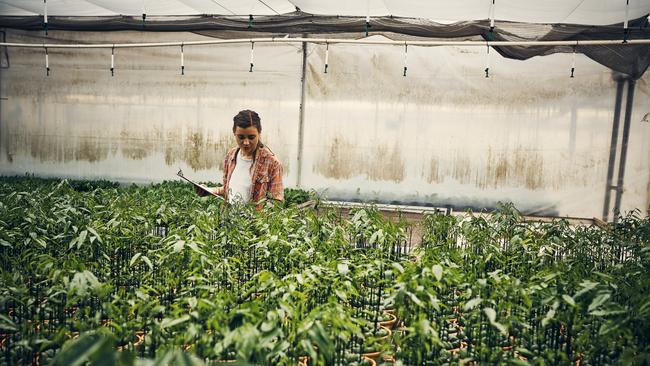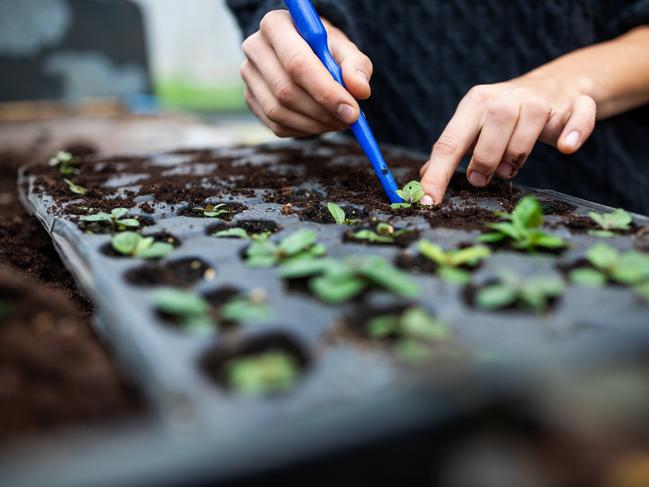Covid’s silver lining: business is booming for nurseries
Frustrated that plants have been in such short supply since the pandemic struck? Here’s why.

If you’ve found it difficult to buy plants over the past 10 months, understanding why might make it a little less frustrating.
An unexpected, yet positive, effect of the pandemic has been a boom period for the nursery industry. Peter Vaughan, CEO of peak body Greenlife Industry Australia, says of the increased demand since Covid-19 struck: “It started in March with a panic run on everything edible – vegetable and herb seedlings and seeds, and fruit trees. Then when people were stuck at home, demand spread to indoor plants and then garden plants.”
Through last autumn and into winter, Vaughan explains, demand stayed at such high levels that plants being grown for spring were brought forward and sold, even though still small. That in turn created serious shortages in spring and summer. “Plants are not an inert manufactured product,” he says. “They’re living products that take a lot of planning and time to get from seeds or cuttings or tissue culture to produce a viable plant.”

A shrub in a 20cm diameter pot can take between eight and 18 months to produce, depending on the species and where it is grown (generally speaking, the warmer the climate, the faster the growth). A “standard” gardenia – grown like a ball on a stick – can take six years to produce, and advanced trees in 100-litre containers might be five years in production.
Third-generation citrus grower Mark Engall of Engall’s Nursery in Sydney explains that a grafted citrus tree in a 20cm pot takes nearly three years to produce, while advanced citrus in 40cm pots take five years. He has seen an increase in demand for fruit trees over the past two years but confirms the pandemic took things to new levels and says the current stock shortage will last well into this year.
Vegetable and herb seedlings, on the other hand, grow very quickly, in four to six weeks. David Jakobs, CEO of Oasis Horticulture, Australia’s largest seedling grower, reports its sales increased nearly 200 per cent in March to June last year. “Stock sold out within hours of delivery to retailers,” he says. “Seedlings were like toilet paper for about six weeks at the peak.” Since then sales have settled to 25-35 per cent above the previous year and Jakobs expects they will stay around that level.
Vaughan says the nursery industry’s challenge is to convert the many new gardeners into established and competent ones. He cites initiatives such as Plant Pals, an online community to ensure beginners have access to expert advice, support and ideas.
Meanwhile, large wholesale nurseries are scrambling to source the tubestock they normally buy in vast quantities. “There’s a major shortage,” confirms Marc Patterson, general manager of Kenthurst Nursery in Sydney’s north-west. “Many of the propagation businesses have disappeared in recent years, and now demand far outstrips supply.” Several large nurseries are investing in new propagation facilities to secure their own supply.
Australia produced $2.4bn wholesale value of plants in 2018-19 (the most recent figures available). About half went to retail, 20 per cent direct to the landscape industry and 30 per cent to forestry, revegetation, government and primary industry.
“The challenge for growers is what they should grow to meet future demand,” says Vaughan. “Most foresee increased demand but it is hard to predict.” Patterson jokes that growers need a crystal ball. “It’s not just volumes we need to predict but which plants will be fashionable,” he says. “Colours and styles change every year.”
Q&A
For my suburban citrus orchard, which would be best: seedless Valencia or Washington Navel oranges, or Imperial mandarin? Ned Dukic, Melbourne
Valencia is more climatically adaptable, better for juicing, and the fruit holds on the tree for months from late spring through summer, becoming sweeter with age. Navels are winter cropping and deteriorate faster; easily peeled and segmented, they’re most popular for eating but are more prone to mites and alternate bearing (good crops every second year). Growing both provides oranges for much of the year. Imperial mandarins crop from early winter over many weeks and can be alternate bearing. The seeded fruit are easy to peel. Adding other varieties that crop later will extend your harvest. Choice of rootstock for your region is important.
How can I get rid of root-knot nematodes in my raised vegie bed? Sue Pheloung, by email
This serious pest affects most vegetables and also strawberries. Grow a green manure crop of marigolds, mustard or Japanese oats. Increase organic matter, including chicken manure, to feed predatory micro-organisms. Practise good hygiene and crop rotation; vegies not affected include corn, leeks and brassicas.
What Australian plants can I grow indoors? Would banksias work? Daniel Samotus, Canberra
Only plants adapted to low light can survive indoors. Banksias need full sun. Try ferns such as bird’s nest, maidenhair and Blechnum species. Larger plants include umbrella tree (Schefflera), black bean (Castanospermum) and any of the native palms and Ficus species. Hoya and kangaroo vine (Cissus antarctica) are good climbing or hanging plants.
Send your questions to: helenyoungtwig@gmail.com or Helen Young, PO Box 3098, Willoughby North, NSW 2068. Website: helenyoung.com.au. The best question for December/January wins a Nylex retractable 20m hose reel worth $149.



